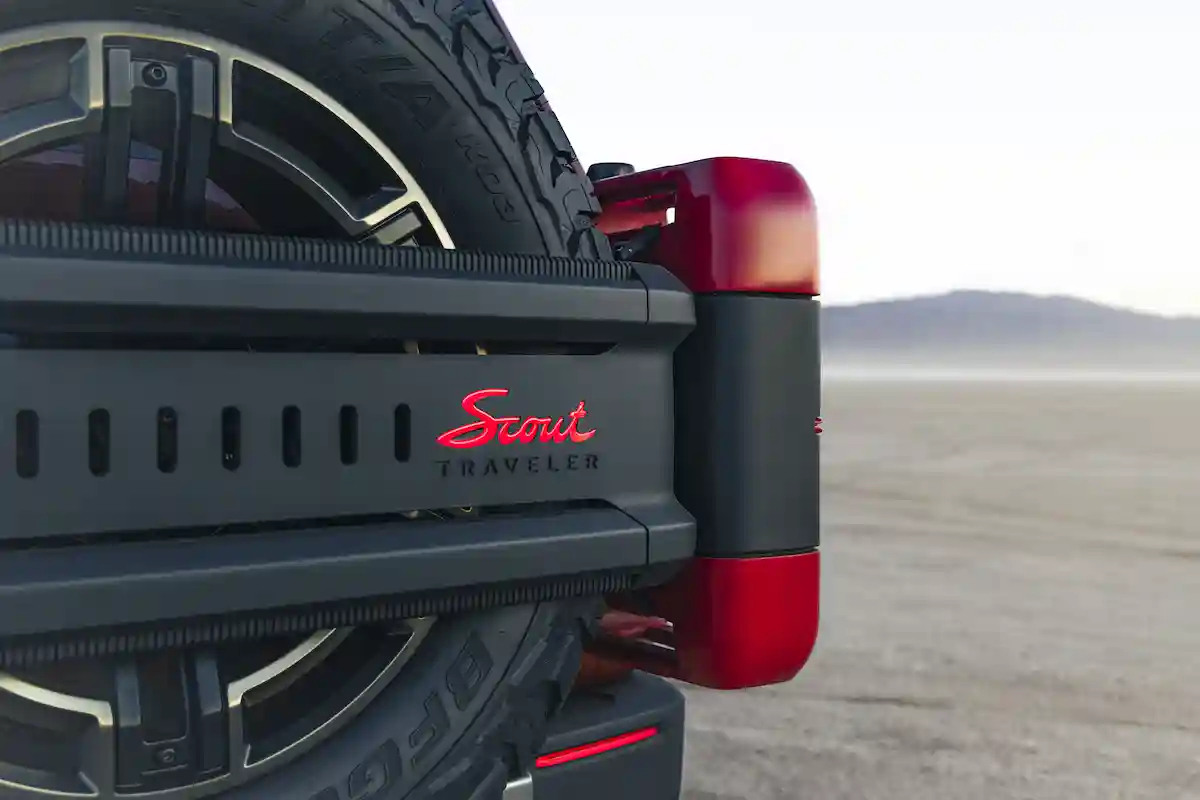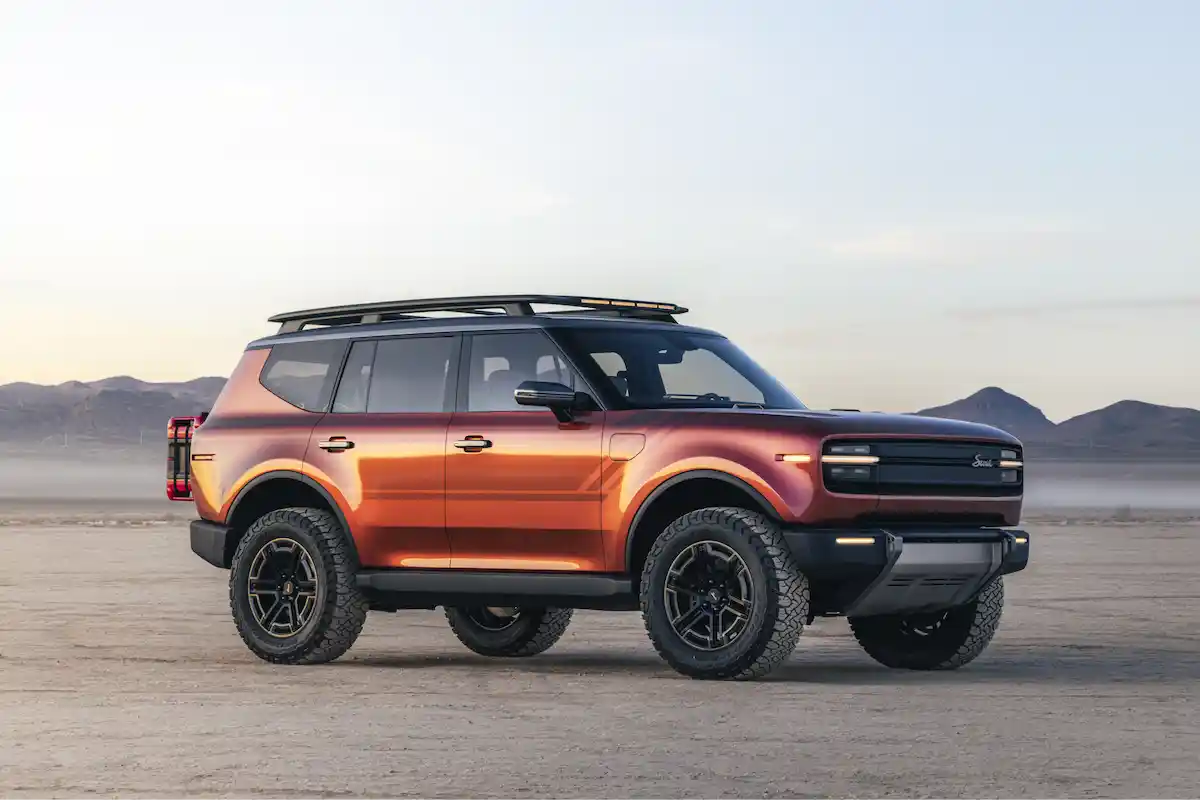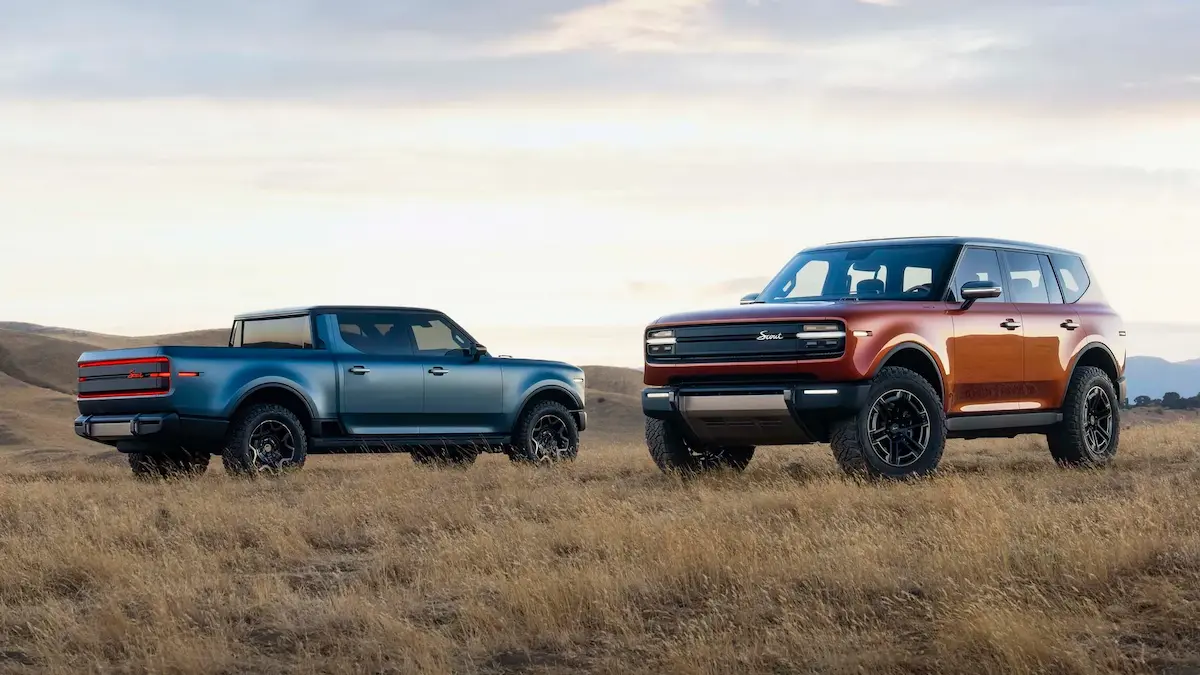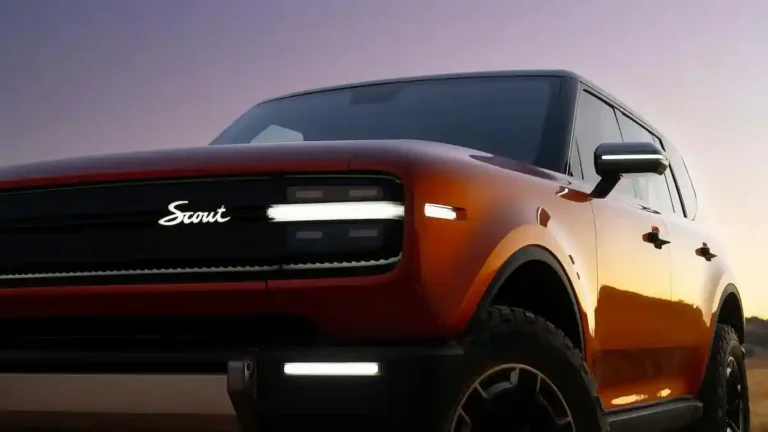The revival of Scout Motors under Volkswagen is shaping up to be one of the most exciting developments in the U.S. electric vehicle market. While we’ve already seen glimpses of its upcoming vehicles, key technical details have remained scarce—until now! The company is taking a unique approach by offering both fully electric (BEV) and range-extended (EREV) versions of its upcoming vehicles. Now, we have new details about the ‘Harvester’ range extender. It will use a naturally aspirated four-cylinder engine, and deliver an impressive range of 500 miles.

Table of Contents
The “Harvester” Range Extender: A Unique Approach to Long-Range Capability
One of the standout features of Scout’s strategy is its dual approach—offering both a pure electric vehicle (BEV) and a range-extended electric vehicle (EREV). The Harvester range extender will use a four-cylinder engine as a generator, likely sourced from Volkswagen. Scout’s President and CEO Scott Keogh described it as a “high-output four-cylinder that packages well,” though it will lack a turbocharger and require modifications for its role.
The EREV’s battery pack will have a capacity of 60-70 kWh, roughly half the size of the 120-130 kWh battery in the fully electric variant. However, the EREV will achieve over 500 miles of total range, combining 150 miles of battery-only driving with the generator’s extended capability.
To optimize space, Scout has designed the EREV’s fuel tank and generator to fit where the larger battery would be in the BEV, ensuring identical interior packaging and frunk capacity for both versions.
Performance and Powertrain Differences

Performance-wise, the pure EV variant will be the quicker of the two, with a 0-60 mph time of approximately 3.5 seconds, compared to 4.5 seconds for the EREV. The battery chemistry will also differ, with the EREV likely using a lithium iron phosphate (LFP) battery for affordability and frequent full charging, while the BEV is expected to feature a nickel manganese cobalt (NMC) battery for higher energy density and performance.
Both models will have a 2,000-pound payload capacity, but the tow rating may slightly favour the EREV, making it a strong competitor to the upcoming Ram 1500 Ramcharger. Scout anticipates that the EREV model will be particularly popular among long-distance haulers and adventure enthusiasts.
Driving Modes and Customer Preferences
The Harvester EREV will feature at least three driving modes:
- Battery-focused mode – prioritizing electric power until depletion.
- Hybrid mode – balancing generator use for efficiency.
- Engine-reliant mode – using the combustion engine as the primary power source.
Early customer interest reflects a strong demand for range extenders. Keogh confirmed that over 50% of Scout’s early reservations are for the EREV variant, with 70% of buyers opting for the Traveler SUV body style.
Made in America: Localized Supply Chain and Direct Sales Model

Scout Motors is positioning itself as a homegrown brand, with 85% of its supply chain localized in the United States. This ensures eligibility for the full $7,500 federal EV tax credit—a key advantage for buyers. However, with the 2024 U.S. elections approaching, Keogh acknowledged that EV incentives could be at risk under a Trump administration, potentially before Scout’s 2027 production start date.
The company is also exploring a direct-to-consumer sales model, bypassing traditional dealerships. However, past attempts by automakers to adopt this model have been met with legal pushback from dealership networks, making it uncertain whether Scout can successfully implement this strategy.
Scout’s Future: A $2 Billion Factory and High Production Ambitions
Scout Motors plans to roll out its Traveler SUV and Terra pickup truck from a brand-new $2 billion facility in South Carolina, with a target annual production capacity of 200,000 vehicles. With both EV and range-extended powertrains, Scout aims to carve out a unique niche in the electric truck and SUV market, competing against brands like Rivian, Ford, and Ram.
As the 2027 launch nears, Scout Motors is gearing up to revive an iconic name with cutting-edge electric technology, promising a compelling mix of performance, range, and rugged capability for modern adventurers.


